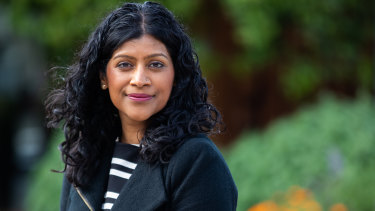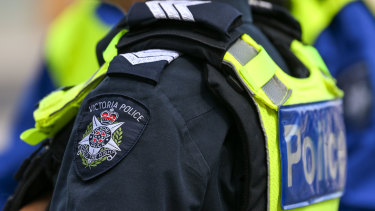Key posts
Tim Piper, the Victorian Head of employer association Ai Group, welcomed the government infrastructure spending while suggesting industry was running hot due to labour shortages.
“The program for delivering this infrastructure will also need to take into account and address industry’s overall capacity to meet the additional demands,” he said.
“We know that industry is concerned at the lack of labour and particularly skilled workers. This effectively constrains capacity. We hope government will be recognising these constraints and actively pursuing an agenda to develop industry capabilities and particularly workforce capabilities.
“This is a budget with the government’s eyes firmly set on November and ensuring its social agenda is pursued.
“The government projections are for the state to have a lower growth rate than the rest of the country as a whole over the next two years. We expect the Government’s ambition would be to at least meet, if not do better than, the rest of the Australian economy.”
We’ve put together a full list of new schools opening in 2024 and upgraded specialist schools. Check it out here:
The Victorian Greens say the Andrews government missed an opportunity to ease housing affordability, after ditching its social housing levy, in what the minor party described as the biggest cost of living issue facing the state.
“Victoria is currently staring down the barrel of an unprecedented housing crisis that will only get worse without urgent action,” Victorian Greens leader Samantha Ratnam said.

Victorian Greens leader Samantha Ratnam says budget could do more to improve housing affordability.Credit:Jason South
The Greens and fellow crossbench MPs have broadly welcomed the budget.
Tania Maxwell from Derryn Hinch’s Justice Party welcomed the government’s investment to improve ambulance response times and increase the number of Triple Zero workers, while Animal Justice Party MP Andy Meddick described Tuesday’s budget as Victoria’s “most animal friendly budget in history” following funding for animal shelters and a koala hospital.
Treasurer Tim Pallas wanted to impose a 1.75 per cent levy on projects with more than three dwellings in what would fund new social housing units, in return for a streamlined planning process.
But he dumped the controversial package two weeks after announcing it, amid fierce opposition from the property sector.
The Greens wanted the government to revive the levy and tax developers even more, between 2 and 3 per cent on new developments, in what they argued could raise up to $12.3 billion over a decade.
There were almost 55,000 households on the waiting list for social housing in December last year.
“This budget was a crucial opportunity for the government to support those facing housing insecurity and homelessness and find ways of raising money to build new public homes, and they dropped the ball by not reintroducing the social housing levy,” Ratnam said.
She also wanted the government to introduce a cap on rents.
The Greens, which broadly welcomed health investments, urged the government to invest more strongly in curbing climate change or boosting biodiversity, with now more than 2000 threatened species.
We’d love to hear your take on the budget. Please nominate the most important part of this year’s budget in our poll:
The two biggest credit rating agencies, Moody’s and Standard & Poors have released their initial assessments of the state budget.
Moody’s vice president John Manning said the state’s economic recovery had exceeded initial expectations but the pressure on government finances was still hefty.
“Business confidence and consumer sentiment strongly rebounded after the state’s extended lockdowns and will slow the growth rate in the state’s debt burden and support its return to a gross operating surplus by the end of 2026.
However, sustained debt-funded capital spending – expected to average AUD21.3 billion annually over the next four years – will drive Victoria’s debt burden significantly and persistently higher than our expectations by the end of 2026, constraining the state’s capacity to pursue fiscal repair.
We consider rising inflationary pressures, and hence, interest rates, as well as likely more volatile global economic growth amid elevated geopolitical volatility will increase cost pressures for the state and make the budgeted expenditure levels challenging to achieve.
Despite the underlying strength of the Victorian and broader Australian economy, we expect Victoria’s debt burden will not stabilise before the end of fiscal 2027, further increasing negative pressure on the state’s rating.
In a statement Standard & Poor’s likewise said the budget marked a “strong economic recovery” but not enough to eliminate the downside risks to the state’s financial position.
“We forecast the economic recovery to improve Victoria’s cash operating balances. However, a large infrastructure budget will ensure large after-capital account deficits drive debt higher.
“Our ‘AA’ rating on Victoria is based on our expectation that the state’s very large after-capital account deficits will start to narrow over the forward estimates. Victoria’s operating position could broadly balance as early as fiscal 2023, driven by property and payroll taxes and operating expenses normalising after the pandemic. This will help the state to fund its new policy decisions, such as a large health-related package.
The state’s debt levels are likely to soar past 200 per cent of operating revenues by fiscal 2024 due to historically high infrastructure spending, exacerbated by rising inflationary pressures and some project-related cost overruns.
While no new major infrastructure projects were announced in today’s budget, an already packed pipeline means debt levels continue to rise, reflecting large and persistent after-capital account deficits.
We consequently believe Victoria’s fiscal repair will be gradual.
The recovering and wealthy economy, strong financial management, and comprehensive liquidity coverage support our ratings and stable outlook.
A pandemic-induced dip in Victoria’s population has not slowed the state’s school building boom, with $1.8 billion committed to building 13 schools in Melbourne’s outer suburbs, acquiring land for future schools in growth areas and upgrading dozens of existing schools across the state, education editor Adam Carey reports.
Students with disability have come in for special attention, with 36 special schools to receive $326 million for upgrades, roughly half of the total funding in the budget for school upgrades in 2022-23.
Treasurer Tim Pallas noted in his budget speech that the commitment will ensure that the Andrews government has upgraded every special school in the state since coming to power in 2014.
Read the full story here.
A total of $2.6 billion will be spent preparing for the 2026 Commonwealth Games which, for the first time in the event’s history, will be held across four regions, Jewel Topsfield reports.
Athlete hubs will be established in Geelong, Bendigo, Ballarat and Gippsland, with the government hopeful that modern sports infrastructure and housing will leave a legacy for regional Victorians for decades to come.

Fireworks at the closing ceremony of the 2006 Games at the MCG, which will host the 2026 opening ceremony.Credit:Penny Stephens
Shepparton will also host sporting and cultural events and other regional cities and towns are invited to register their interest in holding activities. An extra $111 million will be spent on tourism and support events.
Regional Development Minister Mary-Anne Thomas said it was expected the Games would contribute more than $3 billion to the Victorian economy. The government estimates more than 7500 jobs will be created before, during and after the event.
Victoria Police will gain hundreds of new officers as the state government prioritises policing capacity.
The force will receive $342 million dollars to recruit 502 police officers and 50 protective service officers over two years.

Victoria Police to get budget boost in state budget.Credit:Eddie Jim
The new officers will take the total number of people employed by Victoria Police to 17,000 by 2024.
Before the budget, Victorian police union secretary Wayne Gatt said that the force needed 1500 police officers to cope with the impact of resourcing.
The Age has previously reported that Victoria has the biggest police force on the east coast, with more than 300 police per 100,000 people.
This year’s budget also allocated $215 million to provide frontline police officers and protective service officers with tasers, bodycam cameras and training.
The impact of pandemic-induced shutdowns on vulnerable children have been laid bare in Tuesday’s budget.
The Victorian government had anticipated more than 136,000 reports to child protection services about the wellbeing and safety of children in the 2021-2022 year, however, there were 119,489 reports.
Treasury blamed that difference on the pandemic, stating “there was less oversight of children in school settings during COVID-19 lockdown periods”.
The number of investigations that arose from reports to child protection services was also smaller than anticipated “due to fewer results of the impact of COVID-19 restrictions”, as well as strengthened early intervention measures.
There were 35,600 investigations, compared to the government’s target of 39,000.
Victorian school children have missed out on months of on-site learning over the past two years following repeated school closures to curb the spread of COVID-19.
Some experts had criticised the strategy, warning about the long-term impact of school closures, including on vulnerable children, who were allowed to be supervised at school.
https://news.google.com/__i/rss/rd/articles/CBMivgFodHRwczovL3d3dy50aGVhZ2UuY29tLmF1L3BvbGl0aWNzL3ZpY3RvcmlhL3ZpY3Rvcmlhbi1idWRnZXQtMjAyMi1saXZlLXVwZGF0ZXMtZW5lcmd5LWJpbGwtcmViYXRlcy1oZWFsdGhjYXJlLWZ1bmRpbmctb24tdGhlLWFnZW5kYS1hcy10aW0tcGFsbGFzLWhhbmRzLWRvd24tc3RhdGUtYnVkZ2V0LTIwMjIwNTAyLXA1YWhyYi5odG1s0gG-AWh0dHBzOi8vYW1wLnRoZWFnZS5jb20uYXUvcG9saXRpY3MvdmljdG9yaWEvdmljdG9yaWFuLWJ1ZGdldC0yMDIyLWxpdmUtdXBkYXRlcy1lbmVyZ3ktYmlsbC1yZWJhdGVzLWhlYWx0aGNhcmUtZnVuZGluZy1vbi10aGUtYWdlbmRhLWFzLXRpbS1wYWxsYXMtaGFuZHMtZG93bi1zdGF0ZS1idWRnZXQtMjAyMjA1MDItcDVhaHJiLmh0bWw?oc=5
2022-05-03 05:34:21Z
1407800720
Bagikan Berita Ini














0 Response to "Victorian budget 2022 LIVE updates: State debt projected to $162 billion by 2025; jobseekers, regions, households big winners as Tim Pallas hands down state budget - The Age"
Post a Comment